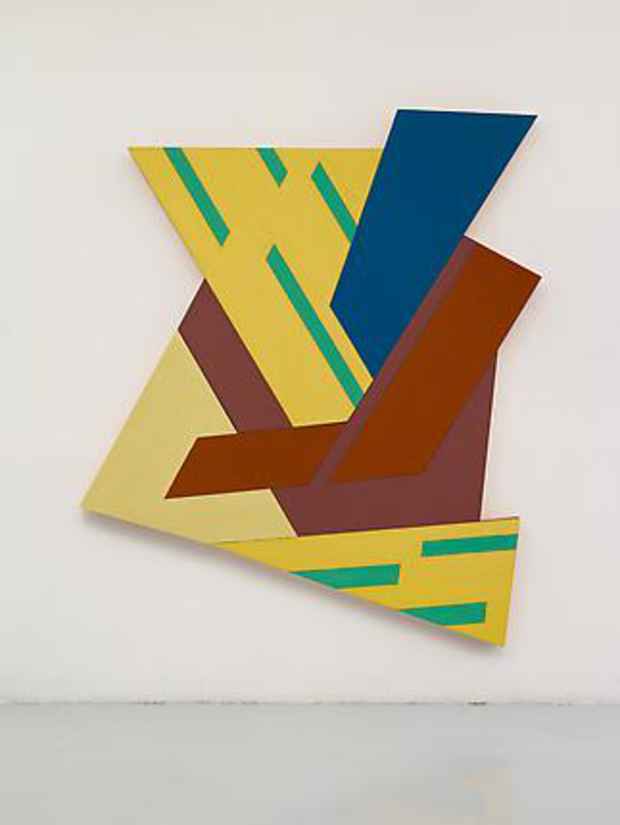Frank Stella “Polish Village”
Van Doren Waxter

This event has ended.
Angular, graphic, and often brightly colored, the works in Stella’s Polish Village series were inspired by the distinct architecture of wooden Polish synagogues built in the 17th, 18th, and 19th centuries and destroyed by the Nazis during World War II. While Stella was hospitalized in the summer of 1970, the architect Richard Meier gave him the book Wooden Synagogues by Maria and Kazimierz Piechotka that served as the starting point for this series made between 1971-73. The works are all named after ruined synagogues and villages noted in this book. While these works are not Holocaust memorials, they do function as reminders that with the destruction of these buildings came the destruction of a culture.
Interested in the intricate geometry present in the architecture of these synagogues, including their highly decorative façades, Stella appropriated many of the physical and architectural traits into his works. He paid special attention to the verticality of the buildings as well as the diagonal, slanting roofs and wooden beam structures. The jutting angularity present in the Polish Village works simultaneously highlights the process of their creation and the inherent beauty of the carpentry and design details with the look and feeling of destruction. Using certain arrangements of color and variations in material, Stella is able to create the illusion of three-dimensions as well as works that have a presence in space. Formally, these works investigate Cubist and Russian Constructivist themes.
Within this series exist different versions of each work. Each iteration remains in the same shape and with the same divisions throughout the various versions. The First Versions (I) are made on thick canvas covered stretcher with thin materials such as felt or second layers of canvas that result in a one-dimensional work. The Second Versions (II) employ different colors and a variety of materials, most importantly the addition of boards including plywood, Homosote, press board, Masonite and Kachina-Board. The inclusion of boards alters the depth slightly. The Third Versions (III) have yet another color scheme and utilize cardboard for their support structure and are also the most three-dimensional works within the series with planes that tilt into space. Some works also had a Fourth Version (IV), often made of unpainted wood. These works were not made consecutively, but rather Stella worked on several pieces at once. Two works from the same series, Raków II and Raków III, will be included in this exhibition.
Media
Schedule
from April 30, 2014 to May 23, 2014
Gallery Hours after May 26: Monday – Friday, 10am – 5pm